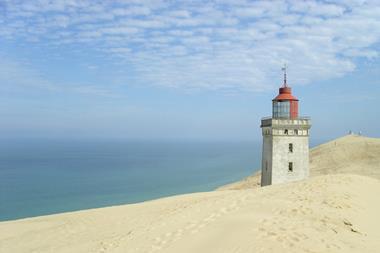Denmark’s largest commercial pension provider PFA Pension reported a fall in investment returns in the first half of this year but said steps it had taken to cut risk had kept profits positive despite negative markets.
The return on PFA’s average interest rate product fell to 1.9% in January to June from 3.2% in the same period last year, while the return related to market-rate products fell to 2% from 6.6%.
In absolute terms, however, PFA’s total investment return for the six-month period was DKK21bn (€2.8bn), up from DKK8bn.
Allan Polack, chief executive at PFA, said: “I am very pleased with the return of DKK21bn, most of all on behalf of our customers because, in spite of a very challenging investment environment in the first half year – with low oil prices, Brexit, negative yields and other significant moments of instability – they can see a positive return on their pension assets.”
The firm said in its report that it had changed its investment strategy before the start of this year to take account of the more volatile markets and the very low levels of interest rates.
“This has meant a reduction in risk within the portfolio by bringing down the equities exposure, as well as an increase in the more stabilising asset classes such as property,” it said.
As a consequence, all PFA customers came through the first half without negative returns, in spite of the negative market movements.
PFA Group’s total assets rose to DKK584bn at the end of June from DKK545bn at the end of December.
Meanwhile, the three pension funds run by Unipension – MP Pension (MP) for Danish M.A.s and M.Sc.s, the Architects’ Pension Fund (AP) and the Pension Fund for Agricultural Academics and Veterinary Surgeons (PJD) – reported first half pre-tax investment returns of 3%, 2.8% and 3.4% respectively.
This compares with full-year 2015 returns of 4.4%, 5.1% and 4.7% for the three funds.
All three pension funds said their half-year results included extra costs due to their ongoing separation from the Unipension cooperation they have worked within for the last few years.
But administrative expenses were lower than had been expected, the pension funds said.
MP Pension’s figures showed Danish equities to be its poorest-performing asset class in the six-month month period, making a 3.8% loss, while gilt-edged bonds were the strongest performers, with a 7.5% return.
The pension funds announced in December that the Unipension name would disappear by the end of 2016, after AP and PJD decided to move their schemes to labour-market pensions provider Sampension, with MP Pension continuing alone.
In other news, Engineers’ pension fund ISP, which is outsourced to commercial mutual provider AP Pension, saw the return on its guaranteed pension product surge to 12% in the first half of this year from 0.4% for the whole of 2015.
Announcing interim results, the pension fund said the high return on the product was due in particular to the fall in interest rates in the period, which produced bond-price rises, as well as gains on its interest-rate hedging.
However, the low level of prevailing interest rates also meant ISP had to put more money aside to be able to live up to its guarantees, the pension fund said.
Yields on market-rate pensions were between 1.1% and 3.5% in the first half, depending on risk profile, compared with a range of 1.1% to 2.4% for the whole of 2015.
Karin Elbæk Nielsen, director at ISP, said: “It was an area of focus for the board to maintain the positive development in returns, which was not as good in 2015.”












No comments yet